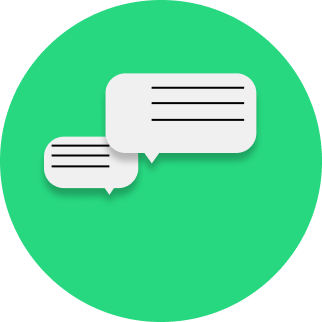We’ve recently written about how you can get ready to engage and consult online where we provided an overview of the different tools people use and which formats of engagement or consultation they support. However, in our day-to-day work with clients, I also often come across the question of how dedicated planning consultation tools compare to, for example, project websites with response forms?
Explaining the differences between a website and an online consultation platform helps to highlight the strengths and weaknesses of each approach. It also highlights how and where dedicated planning consultation platforms fit with your project, your design team, and (indeed) your existing websites.
Project websites
Let’s start by focusing on websites first.
Websites are a key part of your planning project’s public appearance. A website, whether it being your company page or a dedicated project website, often becomes a home for your planning and construction project online. Every project needs to be presented online at some point.
Often we present planning projects at the time of selling the project (or the spaces that were created). The key point however is this: Increasingly it is essential to front-load project publicity either to involve people in the design and to build rapport with end-users, which ultimately results in faster approval times. Linked to this is the ability to sell our project early to the public, buyers, or investors.
To do so, we have seen some primary options:
Project pages on an existing company website
An easy option is to provide a webpage for the project on a company website with a response form. What are some of the benefits and disadvantages here?
Strengths
Weaknesses
Dedicated project websites
Many projects, especially larger ones, can have their own project webpage. Custom websites are often based on WordPress, a popular Content Management System. This is more common for large projects or programmes, which have a significant marketing budget or are sufficiently large-scale. On example here is the Gilston Park project by Places for People.
These websites can take their own branding and can be adapted as suitable to the project needs. This approach is most commonly found for projects, with significant marketing budgets, and involves dedicated PR firms, who look after those websites.
Strengths
Weaknesses
Online engagement platform like PlaceChangers
So how does a web ‘platform’ differ from a website?
Web platforms like PlaceChangers may appear very similar to a project website, but widely enhance the capability of your design team to move faster, with additional collaboration and interactivity. Overall, online engagement tools like PlaceChangers save cost and time handling consultations.
That’s because web platforms like PlaceChangers are built from the ground up to support planning engagement and consultations. PlaceChangers tools, for example, are built around interactive proposal maps. A range of key differences set a planning consultation platform apart from a website, including for instance:
Strengths
Weaknesses
All in all, with a dedicated platform, your design is instantly able to set up, deliver, and report on engagement activities that benefit your project.
How do engagement platforms work with websites?
You might ask if it’s a one or other trade-off between websites and platforms?
It does not need to be.
Online engagement platforms are complementary to project websites. There are many different combinations that can be imagined for different projects, budgets, and audiences. Here are some of the main ways of using a platform with a website.
Linking off to a dedicated consultation platform
For projects with smaller marketing budgets, you can easily use your company website to create a news update or provide a project page there.
The actual consultation is then hosted on a consultation platform such as PlaceChangers, where the whole of the design team can access the consultation without you needing to share access to a website.
Using the consultation platform as the project website
In some instances, particularly for larger projects and marketing budgets, you could choose to use an engagement platform instead of a project website. Here your design team would use an external platform to put together a project landing page and associated consultations. The upside of this approach is the flexibility it provides.
You get to set up quickly and the consultation platform provides everything needed as it’s built for the job. The potential downside is the reduced capacity for visual customisations.
What about time and money?
The good news is that engagement platforms compare very favorably to the time and money otherwise required to put together dedicated project pages that also support suitably interactive engagement with your project.
With PlaceChangers for instance, your cost is typically half of that of a website. Other benefits such as speed, customer satisfaction, team working, and easy reporting far outweigh the benefits of a traditional website.
Takeaways
Web platforms are not a replacement for your marketing, web, or PR specialist. Instead, those stakeholders also benefit from the use of a dedicated engagement platform, which essentially reduces the need for cumbersome customisations of various forms within a project website.
Engagement platforms make the life of consultants easier as they help to auto-generate consultation summaries and they automate some of the back and forth between participants in consultations and the team.
As they are built for the job, they also guarantee that respondents are delighted. You do not need to do an experiment. Websites often can only present information and have little interactivity. Here web platforms for engagement and consultation can shine.
Web platforms for consultation and engagement work well with websites. They can be flexibly adapted and thought of as a powerful feedback tool, made to support more detailed responses and conversations between the design team and the community.
Explore the PlaceChangers planning toolkit

PC Engagement - market leading planning engagement
Set up powerful map surveys and polls based on the changes that may come up on your estate and prioritise future planning interventions more easily.
